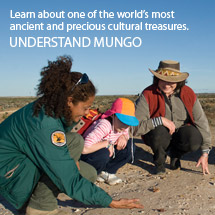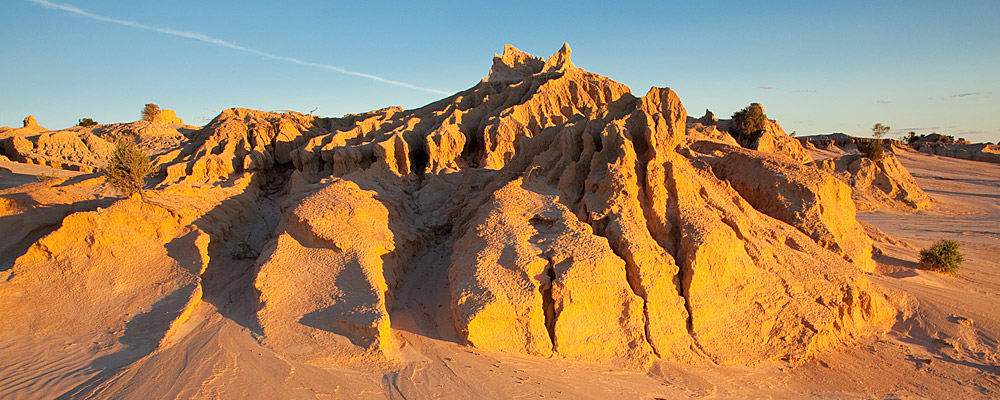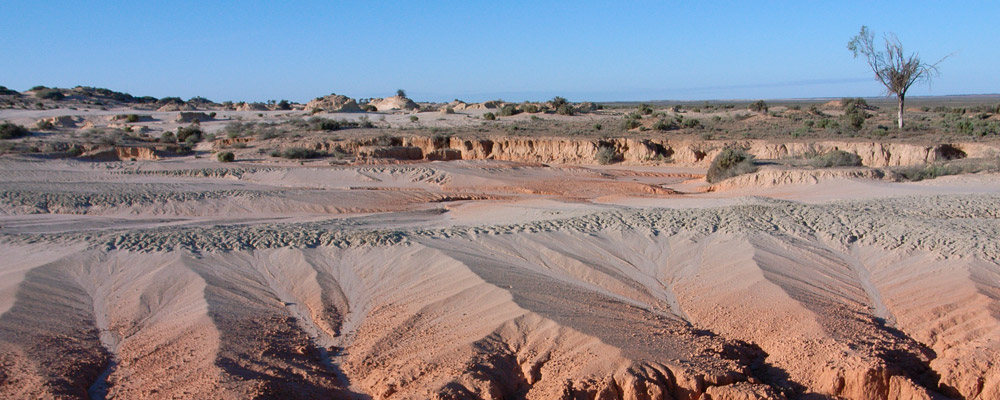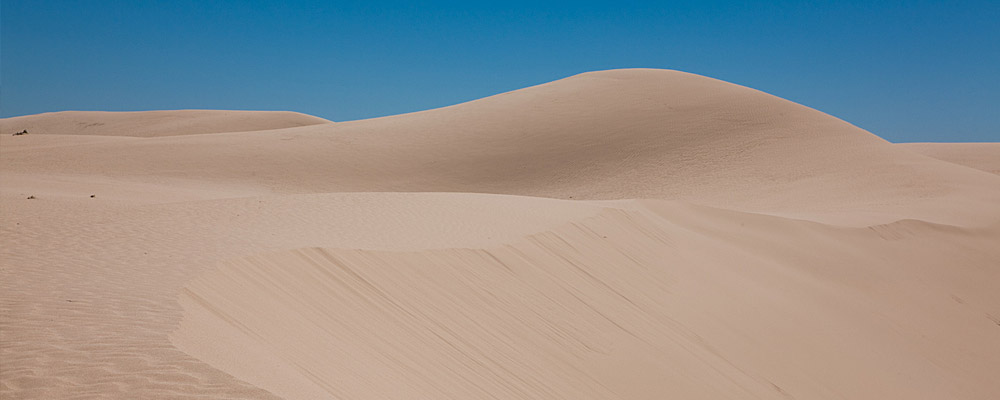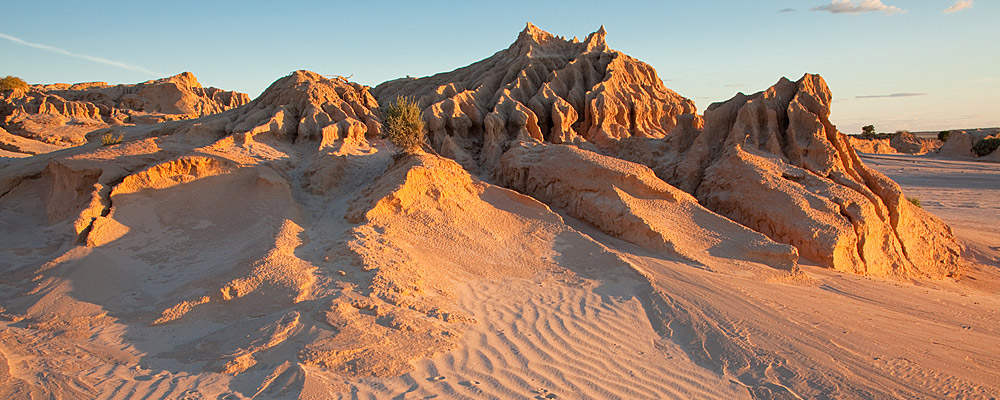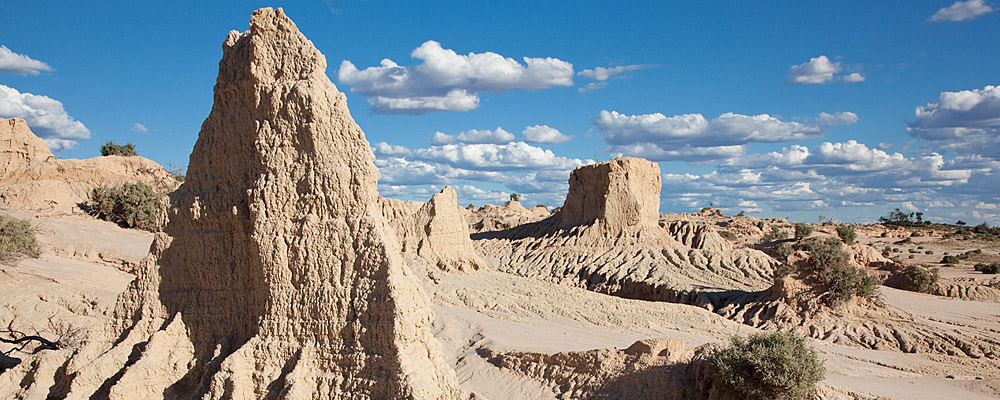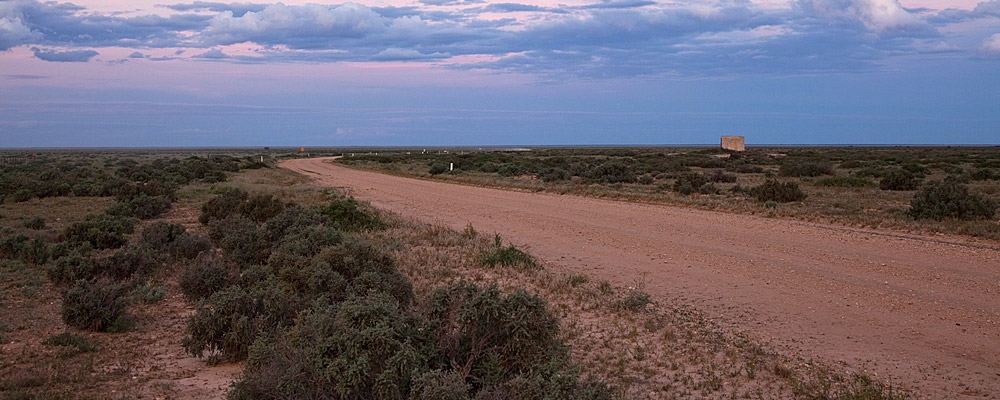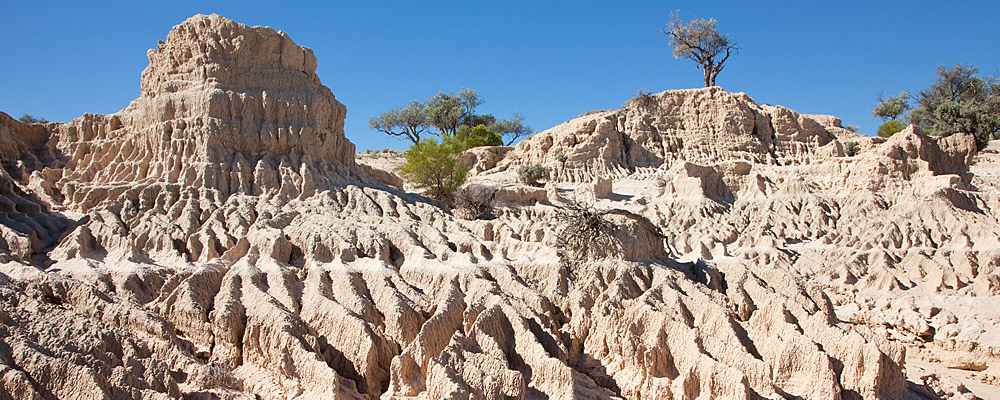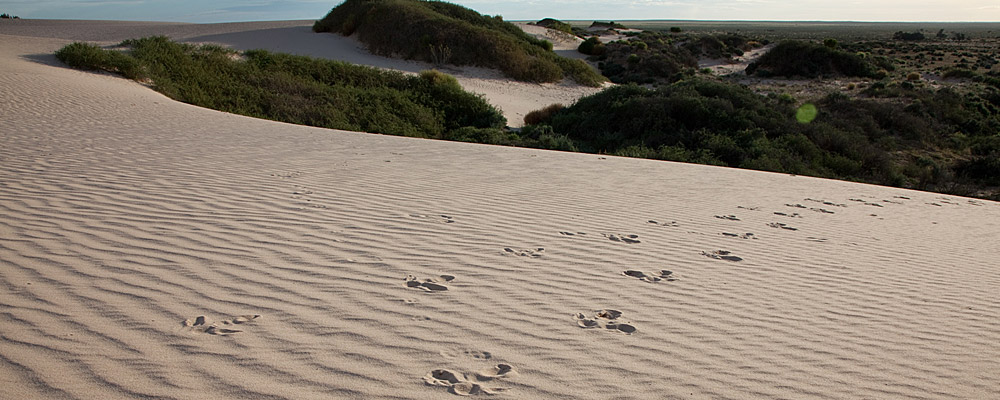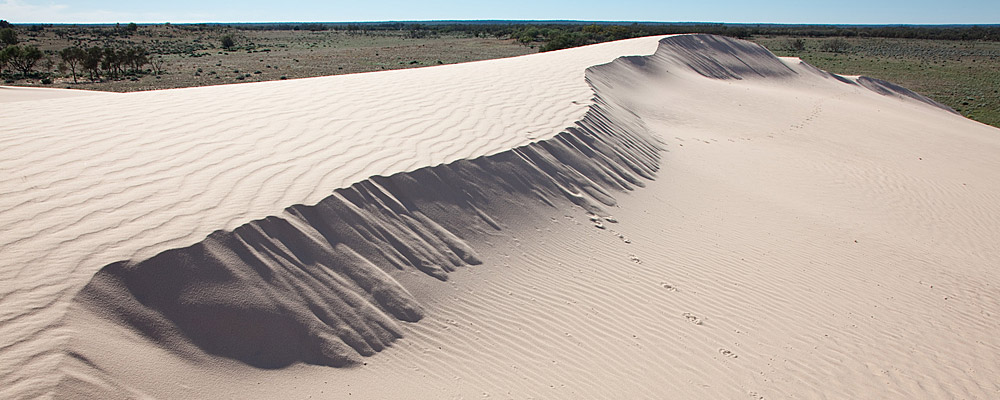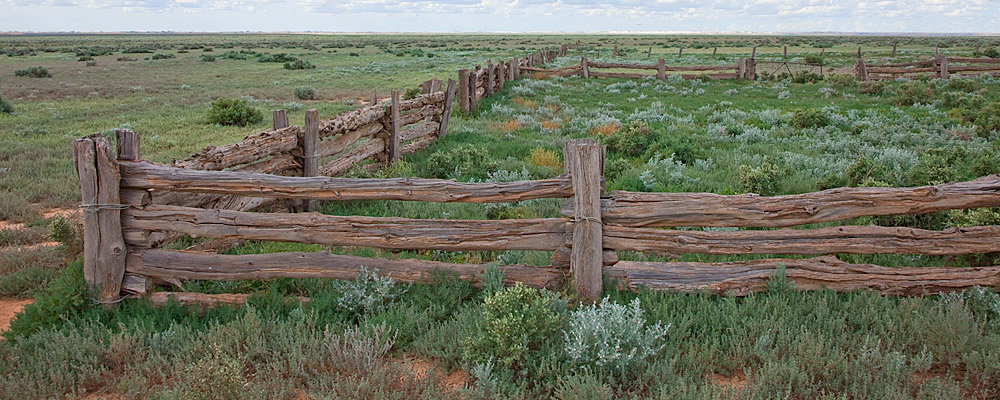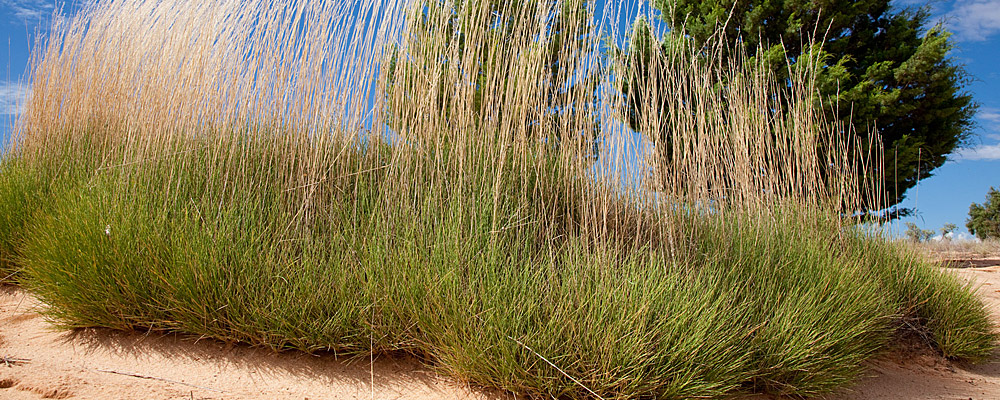Understanding Mungo
Understanding Mungo
- Ancient Mungo Environments
- Mungo Archaeology
- Mungo's Environment Today
- Pastoral Heritage
- World Heritage
- Looking after Mungo
- Ancient Footprints
- Mungo Lady and Mungo Man
- The Three Traditional Tribal Groups
- Mungo Youth Project
The subtle landscape of Mungo and the Willandra Lakes is a precious window where we can look into the deep past of old Australia. Buried here in thick layers of sand and clay are the tell-tale signs of how the climate, waters and landforms have changed over the last 100,000 years and more.
And for at least 45,000 years we humans have shared that past. The ancient Willandra people thrived with the abundance of the lakes, then adapted to drier, hungrier times of the last ice age and survived to the present day. Their story can be discovered in the folds of the land, along with their fireplaces, burials, middens and tools.
Today, Mungo is one of the most important places in Australia for studying the environment of the past and the people who lived through it all. Why is it so? What makes Mungo so special?
Part of the answer lies in the unique position of the ancient Willandra Lakes, which sit near the centre of the Murray Basin. To the west are the mallee and dunefields, and to the east a riverine plain reaches up to the eastern highlands. Inbetween, the 19 connected lakes, now dry, lay along the ancient line of Willandra Creek like a string of dams. The history of these fossil lakes is deeply entwined with what has happened in the dunefields, rivers and mountains hundreds of kilometres away.
This part of Australia has been geologically quiet for thousands of years. Although the lake basins began with small but very significant earth movements, no cataclysmic events, no volcanic eruptions and no glaciers have recently scoured the land. Into this relatively stable environment, sediment from the mountains has washed and accumulated, piling up like the pages in a history book, waiting to be read.
In this section of the website you can explore these and many other aspects of Mungo's natural and human history, including the modern landscape with its flora, fauna, pastoral history and how young people can get involved.
Below are the local Aboriginal Elders speaking about Mungo.
More films can be viewed at the Three Tribal Groups.


